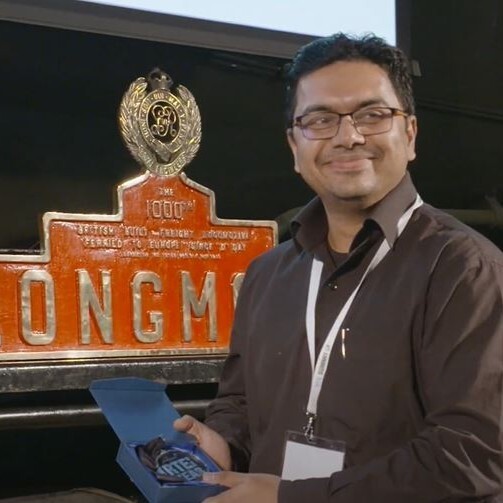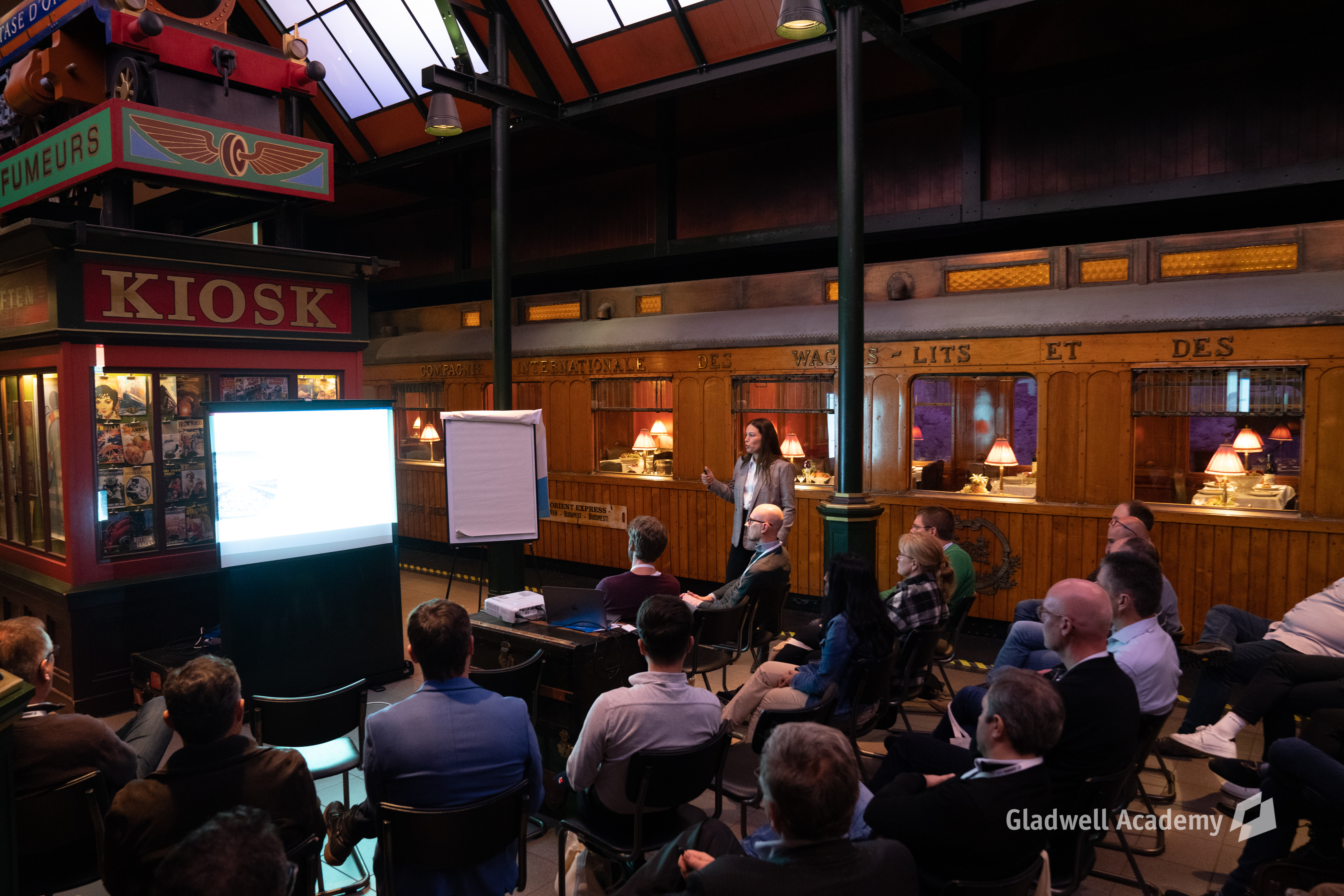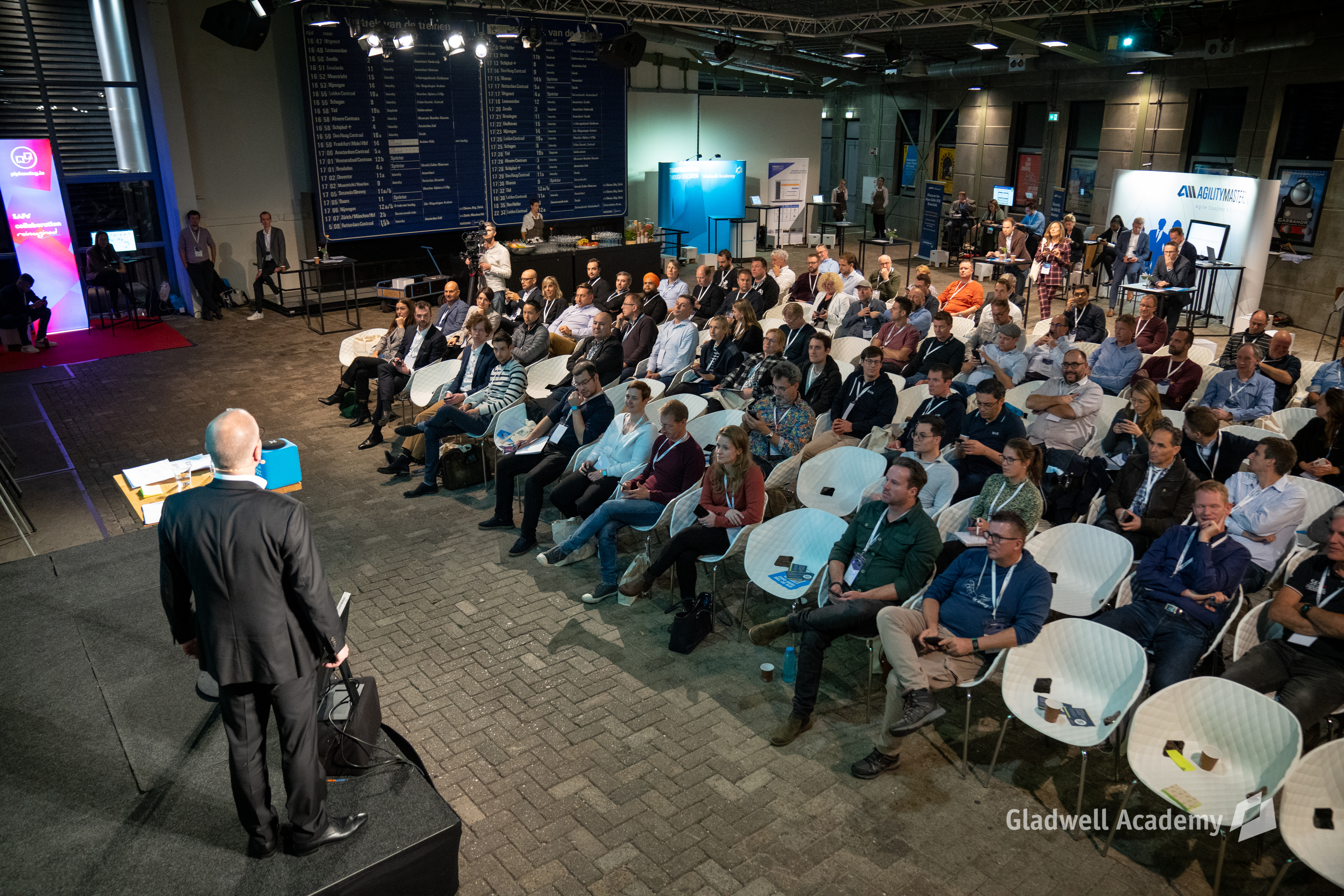Mayank Khare comes across as a very observant man who, as an RTE at KLM with over 15 years of professional experience under his belt, is used to assessing any situation quickly. He clearly knows how to make an impact when we dive into the topic of his upcoming talk at the RTE Summit on November 7 & 8 at Capital C in Amsterdam. I am all ears when he states, “I strongly believe that we should make regular, day-to-day things as boring as possible in our way of working.” I’m glad Mayank follows with “let me explain what I mean”, because the cliffhanger-quality of his statement is undeniable. It immediately sets the tone for an incredibly insightful conversation about his approach to the role of an RTE, the support he finds in the community, and how he is always on the look-out for new insights.
RTE of the Year 2021: Why I Pursue the Boring. Mayank Khare (KLM) on What Makes A Good RTE and How the RTE Summit Continues to Inspire Him

Meeting Mayank Khare

Why boring is the new normal
“A couple of years ago, we had ‘Go Lives’ for our changed or updated applications when they were launched. These ‘Go Lives’ always ended up being cause for cake and celebration, all because we finally went live with something updated. It was a very exciting moment. But now, we’ve left the celebrating for special occasions, such as when a brand-new application goes live. ‘Go Lives’ for updates and changes are now part of day-to-day work. They’re not a big deal. And actually, that’s really good for the organization. There’s no more stress accompanying this event which we used to think was very important. Now, we have the chance to focus our time, energy, and stress on the things that truly matter -- innovation, trying new things, making things more efficient, and celebrating the major milestones. We are also automating more things. “I drive to make my meetings these days very boring, with minimal chit-chat. We talk about work in a very structured way, we get our affairs in order, and then we leave. The disadvantage here is that you don’t get to socialize, of course. But the advantage from this is that you have shorter, more productive meetings, so that you have time to freely socialize outside of your meeting time if you want to. But meetings shouldn’t be for chit-chat. I prefer not to spend the company’s time and money on that.”
Two roles of an RTE
As we moved away from the more general concept of working within an organization and focused specifically on the role of an RTE, we spoke with The RTE of the Year 2021 about what he believes the RTE role should entail. Mayank made it clear that every RTE must play two roles: facilitator and coach. He elaborated on the former, saying that “the first role of an RTE is to not be a boss, but rather a facilitator. At the same time, an RTE is trying to take over and phase out the role of a traditional Program Manager. As such, what they’re actually managing or coordinating isn’t one team, but multiple teams at the same time. It ends up being a situation where the RTE must steer five, seven, or even nine teams without actually steering them. It’s a difficult job, because you ultimately have no control in the end, yet you’re still responsible for how the teams behave, operate, and respond to changes.”
“The second role of an RTE is coaching, in order to make a seamless connection between Business and IT. Business has their own vision and way of working, and IT has their own ecosystem as well, which can make it difficult. Because the moment they realize that things are going very fast, very Agile, Business tends to take a step back. And I completely understand where they come from with that. At KLM, we are not in the business of running an Agile company. We are in the business of aviation. Agile is just a tool we use to do things more efficiently. We are not saying that the waterfall way of doing things won’t work. The industry ran on waterfall for 20 years, so there must be something to it. But it’s a blunt knife, while Agile is the sharpest tool in the shed to get things done, and we want to help every department understand that that’s the case. Of course, it will take time. But the sooner they understand that they only have to endure a couple months of difficulty before reaping the benefits of Agile, the sooner they’re likely to come along on the journey.”
At KLM, we are not in the business of running an Agile company. We are in the business of aviation. Agile is just a tool we use to do things more efficiently.
The impact of an RTE at KLM

“Even to me, it sometimes comes as a surprise when I see the adoption internally. I’ll give you an example at KLM that caught me by surprise but made me very happy: Last year, we had a Weighted Shortest Job First (WSJF) workshop. This is a key element in SAFe. So, we got an invitation to a workshop from the Business team, and I was surprised, because I thought that the WSJF workshop would be only for Epic Owners. Turns out, the whole workshop was actually completely for the Business Domain and Controllers, who were all so fascinated about the idea that they wanted to incorporate it into their own day-to-day business processes. So, I gave a workshop to people who are not delivering software. That’s actually where you start to see that your efforts as an RTE are worthwhile.
“And that’s what the role of the RTE is: to coach in order to achieve the best way of working, to see how we can achieve greater collaboration and efficiency, and to facilitate and be responsible without taking over and becoming controlling.” RTEs are facilitators and coaches who guide their ARTs to success without taking control from any of the teams -- an uneasy task -- which is what makes their role so unique and worth celebrating. And, at our annual RTE Summit, we want to do just that. Opening a workspace where RTEs are welcome to share stories of not only their successes, but also their challenges is what helps create an environment that is conducive to learning at each and every one of our RTE Summits.
Opening a workspace where RTEs are welcome to share stories of not only their successes, but also their challenges is what helps create an environment that is conducive to learning at each and every one of our RTE Summits.
The RTE Summit as a source of inspiration

With all the responsibility on the shoulders of each and every RTE, it’s no surprise that they are always looking to learn new things and get inspired wherever their path takes them. Mayank highlighted this: “I am still looking to get more inspiration at the RTE Summit in November. Hearing other RTEs share their stories is something I really look forward to. Last year, it happened mostly at the workshops for me. But I’m not interested in how to do the day-to-day activities. Everyone does it the same way, plus or minus ten percent. I want to hear about the elements that are done differently -- what are they? That’s why last year, I really enjoyed the session from Amadeus -- the LACE that they have. I was really impressed that they took control. That they actually started working in their own Agile network. That’s why I’m particularly looking forward to hearing those kinds of stories at the workshops at the upcoming RTE Summit.”
“For me, the workshops are really the most important part of each day. They’re great because they give you a chance to really engage with the people there. It’s not just another presentation where you listen. It’s a chance to hear other people’s experiences and share your own. You learn from each other. And with the workshops, you come to see that there’s a lot of learning happening there, and there’s no ‘one size fits all’ approach being taken.”
Knowledge exchange

“I remember a gentleman at a workshop last year who was struggling,
and I was really happy to help him out. It meant a lot to me when he
said that I even inspired him. But my ability to inspire came from the
inspiration that I gained during my previous workshops and
conversations. There’s a lot of give and take happening. Ultimately,
the RTE Summit is a community where we are all helping and inspiring
each other.
“KLM is and always was one of the pioneers in Agile implementations, but I understand that there is always room for further growth and improvement – it’s how we all get even better at what we do. And that's what the exchange of knowledge at the RTE Summit does: it offers us the chance to learn and grow simultaneously.” So, if you’re looking to expand your horizons and learn from organizations and individuals outside of your own company and industry, then the RTE Summit is exactly what you’ve been searching for. After all, even the RTE of the Year 2021 himself said that, “There is no European Summit like this -- no other group with whom you can meet offline and have a discussion about your experiences as an RTE.”
